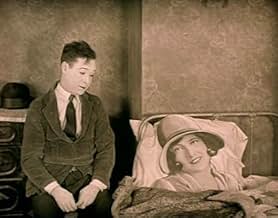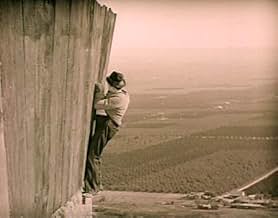While it may today mark a milestone for giving early work to both Joan Crawford and director Frank Capra (here writing his first feature), "Tramp, Tramp, Tramp" mattered at the time for quickly launching Harry Langdon as one of the silent screen's chief clowns.
By the way, that may be the first time the words "Harry Langdon" and "quickly" have appeared in the same sentence.
As a piece of history, "Tramp, Tramp, Tramp" is certainly worth viewing and relatively painless at just over an hour. As a comedy, it's not so smooth a ride, with a thin-as-crepe main story about a walking race across the United States and a lot of padding in the form of Harry's ceaseless blank-faced mugging.
The story has the makings of a Capra classic: While big corporation Burton Shoes ("The Sole Of The Nation" its omnipresent billboards read) gloms up the market by sponsoring the walking race, little shoemaker Logan & Son struggles to pay the rent. It's up to the "Son," Harry, to win the race for the $25,000 reward - with help from Crawford as the Burton CEO's daughter.
"I'll get the money in three months if it takes a year," Harry vows.
But nothing is done with the whole big-company-versus-little-guy thing, it just sort of is there. Harry doesn't have any problems with Mr. Burton, except when he tries to shake the man's hand while eating a sandwich. The love interest with Crawford likewise just sort of happens, with Crawford looking as lost in her role as underdog-loving ingénue as Babe Ruth would be playing shortstop. If her father notices her falling in with this no-account, he doesn't seem to care.
Long sections of the film grow tedious, like a section which finds Harry a prisoner in chains, or another where he first meets Crawford with much shy blinking. At one point Harry shares a bedroom with his chief race rival and landlord, Nick Kargas (Tom Murray). It's almost like Laurel and Hardy, except for the absence of chemistry and Murray's inability to play anything for a laugh.
You see why people talk about Langdon as a proto-Stan Laurel; with his baby face and winsome gaze you never feel anything other than protective of the poor guy. Sections of the film do work, too, like the culmination of a cliff-hanging scene that keeps Harry a step ahead of his competition, or a big finale where Harry and Nick cower in a barber shop buckling in a cyclone.
But even the film's big moment, of Harry on that cliff, only work when you don't think too hard of those other silent clowns whose thrill sequences involved real danger. Here you can see Harry's working with the aid of process shots, and the jump cuts as Harry dodges a series of rolling rocks are hard to miss.
Whoever was directing the film (Harry Edwards is credited, though Capra may have been helping) doesn't seem able to sustain anything, or get the various bits to cohere. While the title cards amuse, the laugh lines are weak. "I'm so crazy about that girl I'm crazy," Harry exudes.
Give "Tramp X 3" points for charm: Langdon was a genial clown, and a minute or two of his finger nibbling can be amusing. It just goes on too long, including two minutes at the end when we see Harry mug some more, this time as a baby in a giant cradle. As a vehicle to launch Harry Langdon to a national audience, "Tramp, Tramp, Tramp" worked like a charm. But as a lasting testament to his comedy, it stumbles more than a bit.



























